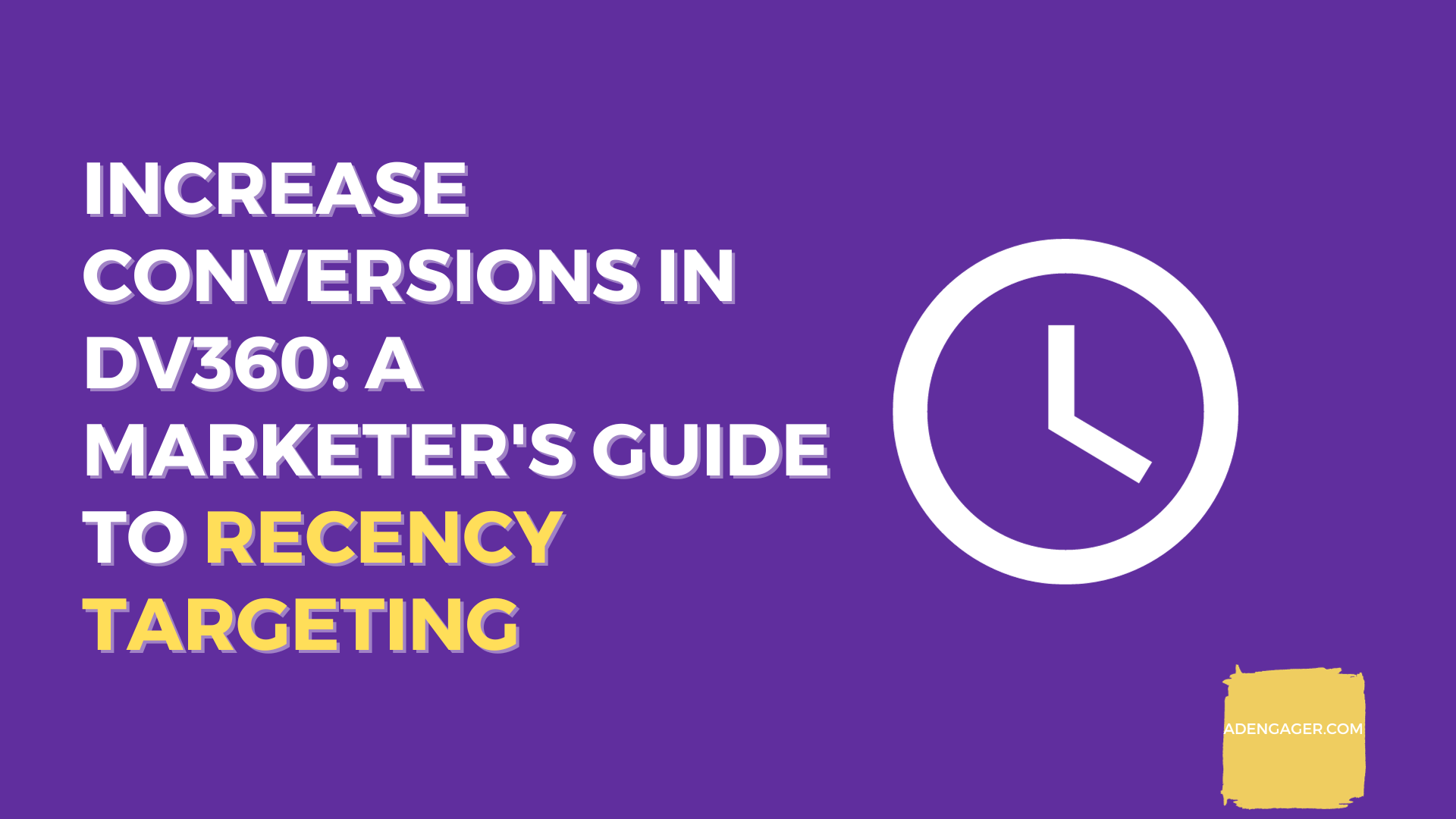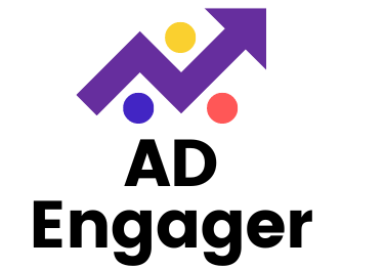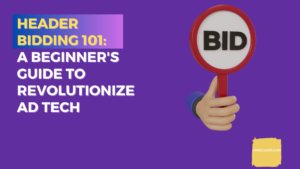Recency Targeting in DV360: How to Effectively Reach Recent Engagers

Recency targeting is one of those awesome but underutilized features in DV360 that can really take your campaigns to the next level. As an experienced programmatic advertiser, I regularly use recency targeting to engage users who have recently interacted with my ads or content.
In this post, I’ll explain what recency targeting is, why it’s so useful for digital marketers, and how to master it in DV360. Whether you’re new to recency targeting or looking to improve your skills, you’ll learn actionable tips to implement this powerful targeting technique.
We’ll cover the nitty-gritty of how recency targeting works, best practices for setting up your campaigns, real-world examples of recency targeting in action, and mistakes to avoid. I’ll share examples from my own experience running recency-targeted campaigns across various industries.
By the end of this guide, you’ll understand how to use recency targeting in DV360 like a pro to drive more conversions, increase engagement, and get the most out of your ad spend. Let’s dive in
What is Recency Targeting?
In the simplest terms, recency targeting allows you to show ads to people based on how recently they took a specific action, like visiting your website, viewing a page, downloading content, making a purchase, etc.
With recency targeting, you can zero in on users who have engaged with your business within a specified timeframe and serve them relevant ads to re-engage them. This could be in the last few hours, days, weeks or even months, depending on your goals.
How to Use Recency Targeting in DV360
Want to use recency targeting in your DV360 campaigns? Here’s how to set it up in 6 easy steps:
- Log in to your DV360 account and navigate to the campaign, insertion order, or line item you want to apply recency targeting to.
- Click on “Targeting” and then “Add targeting.”
- Under “Audience Lists”, select the specific audience you want to target.
- Scroll down and click on “Recency.” Choose either “Absolute” or “Relative” recency.
- Enter your desired recency window such as last 30 days or 10/1/22 – 10/15/22. You’ll see the audience size update.
- Click “Done” and you’re all set! Your campaign is now targeting users who match your recency criteria.
That’s all there is to it! The step-by-step process makes it easy to enable recency targeting in your DV360 campaigns.
When to Use Recency Targeting?
In my experience running DV360 campaigns, recency targeting shines in a few key situations:
One of the top uses is retargeting recent site visitors who didn’t convert right away. For example, targeting people who browsed products in the past 14 days reminds them to come back and complete their purchase.
I also like using recency targeting to re-engage recent converts and customers. This could mean targeting past buyers with new product alerts or people who recently subscribed to your email list with content they’ll find valuable.
Another great application is targeting users who have recently interacted with your ads or content. If someone watched a video or clicked your ad in the last week, they’re primed for a follow-up message.
And of course, recency targeting is ideal when the timing of the user’s interaction matters most. This could be the case for events, sales, or other time-sensitive campaigns.
The added dimension of recency gives you more control over who sees your ads and when. Dialing in your targeting to reach users at the right moment drives results. Give recency targeting a try the next time timing is key!
Best Practices for Recency Targeting
When it comes to recency targeting, I’ve picked up a few tips and tricks that really help boost performance. First, don’t be afraid to start broad with your initial recency window as a testing period. Trying a wider range like 60 days can help you identify the optimal range for engagement.
It’s also smart to use frequency capping along with recency targeting to avoid overexposing users. Caps per user per day or week prevent ad fatigue.
I also recommend layering recency targeting with other options like interests, demographics, and placement targeting for a powerful combined approach. This way you can zero in on just the right users with relevant messaging.
And as with any campaign, continuously monitor and optimize! Check analytics to see which recency ranges are driving the most conversions and engagement. Tweak the windows accordingly to maximize results.
Following these best practices has really leveled up my recency-targeted campaigns. Dialing in the right recency window while avoiding overexposure improves ROI. Start testing what works and you’ll be a recency targeting pro in no time!
Setting the Right Recency Windows
When it comes to recency targeting, I’ve picked up some tips and tricks that really help boost performance.
When it comes to recency targeting, one of the biggest challenges is figuring out the ideal recency window for your campaigns. Based on my experience optimizing recency for clients across ecommerce, SaaS, and more, I’ve developed a process for dialing in the right recency window.
First, you need to start broad and do some testing. Run an initial campaign with a wide recency window like 90 days to gather data. Pay attention to engagement rates and conversion trends based on how recently users interacted. This gives you an initial benchmark.
From there, progressively narrow your recency window in increments of 7-15 days to identify the “sweet spot.” For example, test windows of 90 days, 60 days, 45 days, 30 days etc. Look for the range where you see conversion lift or engagement peaks compared to the broader targeting.
It’s also crucial to consider your overall business needs and funnel when deciding recency windows. If you’re focused on top-funnel awareness, a longer window like 60-90 days could make sense. But for conversions, shorter windows of 7-30 days often work best in my experience.
Factor in the typical customer lifecycle as well. For example, B2B sales cycles tend to be longer than ecommerce. Use longer recency windows to accommodate the longer decision-making process.
Don’t forget to regularly re-evaluate the optimal recency window too. As campaign performance evolves, adjust the window accordingly. Following this approach ensures you hone in on the right recency targeting for your unique situation
Tips for Getting Started:
Test a broad initial recency window as a starting point, like 60-90 days. Then narrow as needed.
Stack recency targeting with interests, demographics, etc. for layered approach.
Use relative recency so the window automatically updates.
Tips for Optimization:
Monitor conversion rate trends by recency window to identify sweet spot.
Adjust recency window every 2-4 weeks to keep up with changes.
Cap frequency at 2-3 times per week per user to prevent overexposure.
Compare performance to a control group without recency targeting.
Excluding Recency Targeting
While most recency targeting focuses on including users who have recently taken actions, you can also leverage exclude recency targeting for greater control. Here are some examples of effective ways to use exclude recency based on my experience.
One common use is excluding recent converters or purchasers from campaigns focused on driving new sales. You want to avoid showing too many ads to users who just bought. Give them time to have a positive post-purchase experience before hitting them with more ads.
Excluding new email subscribers from general promotional campaigns is another good application. You don’t want to overwhelm them right after they sign up by showing the same ads that made them subscribe. Wait 7-30 days before including them in broader targeting.
Here’s a specific example:
We helped a client who was running a contest promotion exclude people who entered the contest in the last 14 days from their general remarketing campaign. This improved relevance by focusing the remarketing on people who hadn’t engaged recently versus showing overly promotional ads to contest entrants.
For an ecommerce client, we excluded customers who made a purchase in the past 30 days from retargeting campaigns. This helped save ad budget for acquiring new customers versus over-marketing to recent buyers.
As you can see, exclude recency gives you more nuanced control over who sees your ads and when. Make sure to consider the user experience and where they are in their journey with your brand
Common Recency Targeting Campaign Examples
Ecommerce Abandoned Cart Campaign
One of my clients was struggling with high abandonment rates, so I set up a 7-day recency targeted campaign. We retargeted users who added items to their cart but didn’t complete checkout in the last week. By reminding them of items still in their cart, we increased purchase conversion rate by 22% among recent abandoners.
Software Webinar Registrants
For a webinar campaign, I targeted users who registered for a live demo in the past 3 days leading up to the event. Recency targeting ensured we were reaching engaged users when they were most likely to attend. We drove a 56% increase in webinar attendance compared to untargeted ads.
Travel Company Recent Site Visitors
Targeting visitors from the past 30 days encouraged them to return and complete bookings they started. We used a countdown incentive which worked well paired with recency messaging. The campaign drove a solid 13% lift in conversions from recent site visitors.
As you can see from these examples, recency targeting is highly effective when combined with relevant, timely messaging
Keys to Recency Targeting Success Beyond the Basics
Beyond setting the right recency windows, there are a few other key factors that can make or break your recency campaigns. Based on my experience, here are some additional tips to drive recency strategy success:
Allocate sufficient budget to reach your audience in the limited recency window. I typically shift budget from broader targeting to maximize exposure among recent engagers. You may need to increase overall campaign budget to account for the narrower audience too.
Use tight frequency caps like 1-2 times per day to prevent overexposure & ad fatigue. Recency targeting alone can increase frequency if budgets are too high.
Test different creative for your recency audiences. Recent site visitors may respond better to an abandond cart reminder ad versus your standard display ads.
Make sure your landing page aligns with the message. If showcasing a special offer, make sure it’s visible on the landing page they see.
Monitor daily to optimize. With narrow recency windows, you need to stay on top of performance trends and continuously refine targeting.
Leverage IP exclusion to prevent bidding against yourself for traffic you already own. This controls costs & limits wasted ad impressions.
Conclusion
And that wraps up my complete guide to mastering recency targeting in DV360! By now, you should have a solid understanding of what recency targeting is, why it’s so effective, and how to use it for your campaigns
Let’s recap some of the key tips we covered:
- Use relative recency for automatic rolling windows vs. fixed dates with absolute recency
- Start broad with your initial recency window, then narrow down based on performance data
- Layer recency targeting with other options like interests and demographics for powerful stacking
- Monitor campaign analytics frequently and optimize your recency window accordingly
- Take business goals and typical customer lifecycle into account when deciding optimal recency range
- Use tight frequency capping to prevent overexposing recency-targeted users
- Test different creative and landing pages tailored to recent engagers
With the right strategy, recency targeting can significantly boost engagement and conversions. I encourage you to test it out and see the results for yourself.
For more information, check out the DV360 help docs or reach out to Google support to discuss best practices for your accounts. I also recommend joining industry communities like r/PPC to connect with other media buyers leveraging recency.
As you build out your recency targeting capabilities, feel free to reach out with any questions! I’m always happy to help fellow advertisers implement and optimize this powerful technique in DV360.






